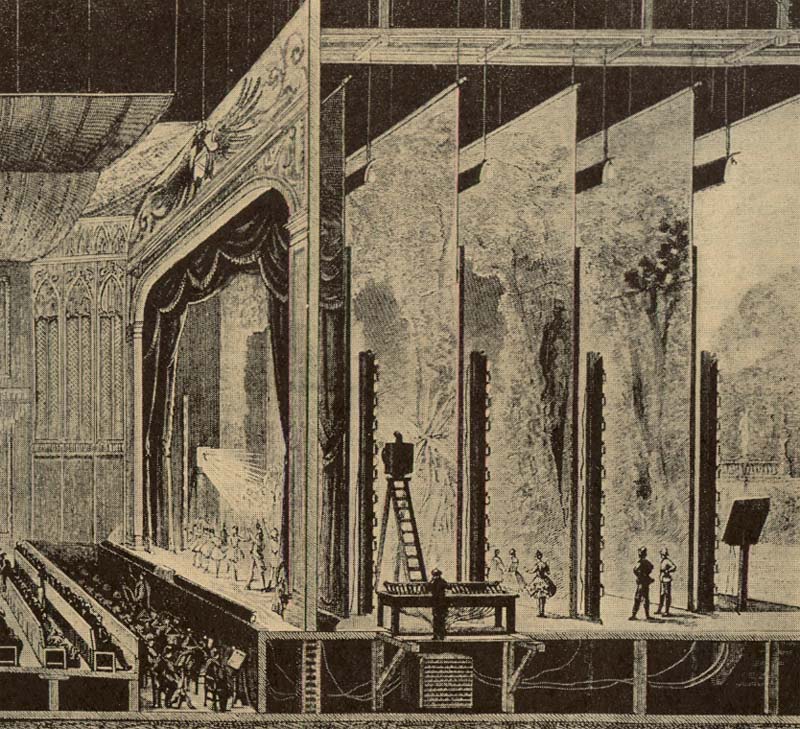

The stage at the Munich Electrotechnical Exposition in 1882: one of the earliest stage lighting installations employing the then newly-invented incandescent lamp. Placement of electric light sources simply replaced the location of gas lamps.
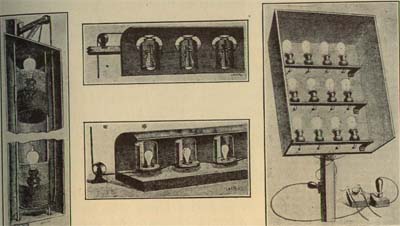
Some units of the stage lighting equipment used at the Munich Electrotechnical Exposition: footlights, borderlights, and vertical striplights with mechanically-operated color screens, and a bunchlight.
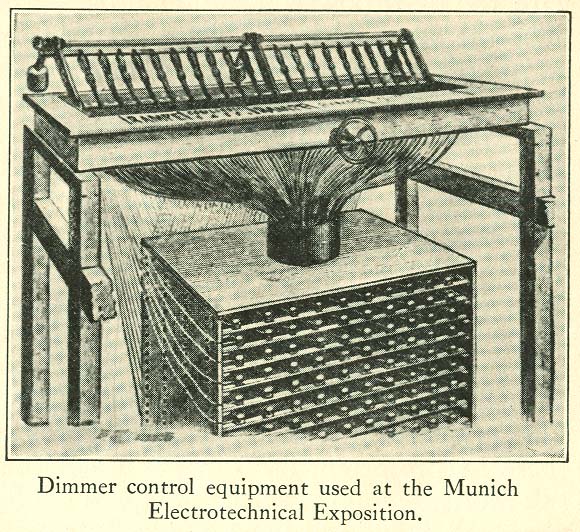
|
Resistance Dimmer Consoles
|
Autotransformer Dimmer Consoles
|
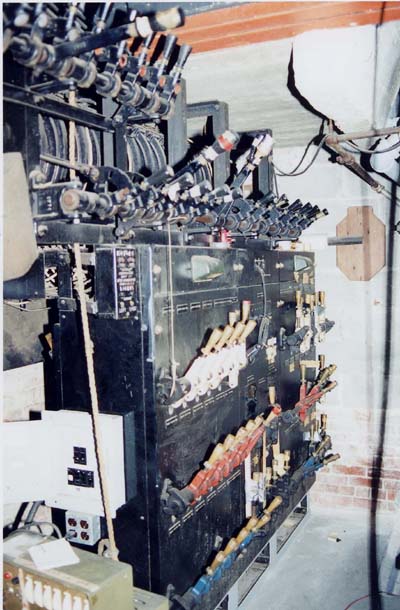 |
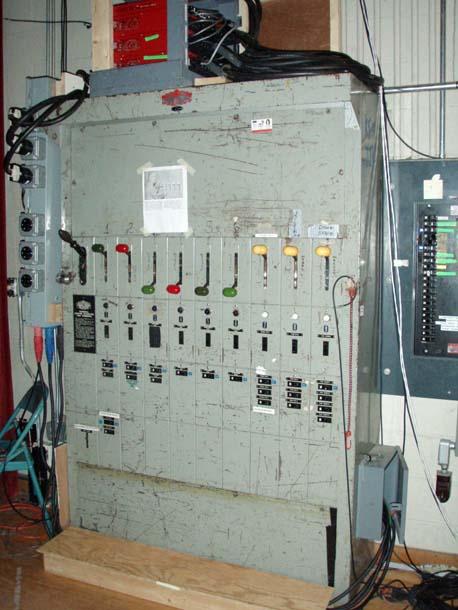 |
Columbus
Theatre |
Needham Community Theatre Newman Elementary School Needham, Massachusetts |
Early Attempts at Remote Control
SCR Dimmers
• Silicon controlled rectifier
• Uses electronic switch (rectifier) to control alternating current.
• Gating process can control any size of load.
• Dimmers receive an electronic signal (12 volts) to determine gate speed.
• Remote control dimmers now possible.
Control console much smaller, portable, and more user friendly.
How Alternating Current (AC) Works
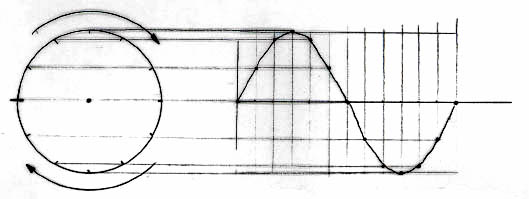
United States Alternating Current Standard
60 Cycles per Second
How SCR Dimmers Work
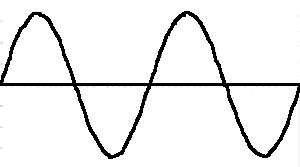
Dimmer Sine wave
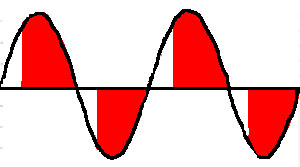
Dimmer at 75%
Image provided by Stage Directions Magazine
Multiple Preset Analog Remote Control Console
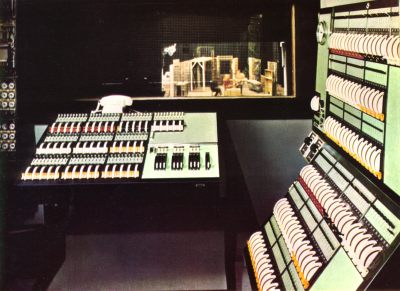
Courtesy the Strand Lighting
Archive
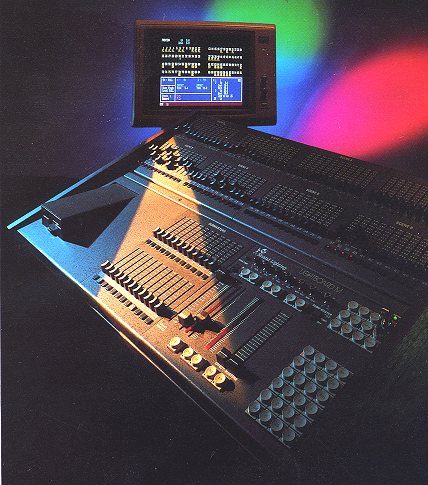
Courtesy the Strand Lighting
Archive
Lighting Control Flow Chart

Development of Lighting Control Systems
1. Demand: Lighting must be able to be turned on and off.
Solution: Provide an on/off switch for every circuit.
2. Demand: Give the theatre space the convenience of being able to plug in lights in a variety of locations.
Solution: Provide many circuits throughout the theatre - ideally one every 18" of every hanging position.
3. Demand: Give the theatre space the ability to dim the lights by assigning circuits to dimmers.
Solution: Provide dimmers for all circuits in the theatre. (Many circuits require many dimmers, limiting the number of controllers for an analog lighting console.)
4. Demand: Give the theatre space the ability to determine which dimmers will control which circuits show by show.
Solution: Provide a patch panel so designer can assign specific circuits to specific dimmers. (If dimmers are expensive, the ability to assign more than one circuit to a given dimmer is very helpful.)
5. Demand: Give the theatre space the ability to control dimmers remotely.
Solution: Provide SCR dimmers and a remote control lighting console located in the back of the audience seating area (DMX512 signal protocol accepted as industry standard).
6. Demand: Give the theatre space the ability to control dimmers with different channels.
Solution: Provide digitally controlled dimming system with softpatch capabilities (different channels capable of controlling one or more dimmers).
7. Demand: Eliminate patch panel and give every circuit its own dimmer.
Solution: Provide digitally controlled dimming system capable of several hundred channels and, therefore, several hundred dimmers.